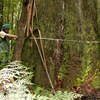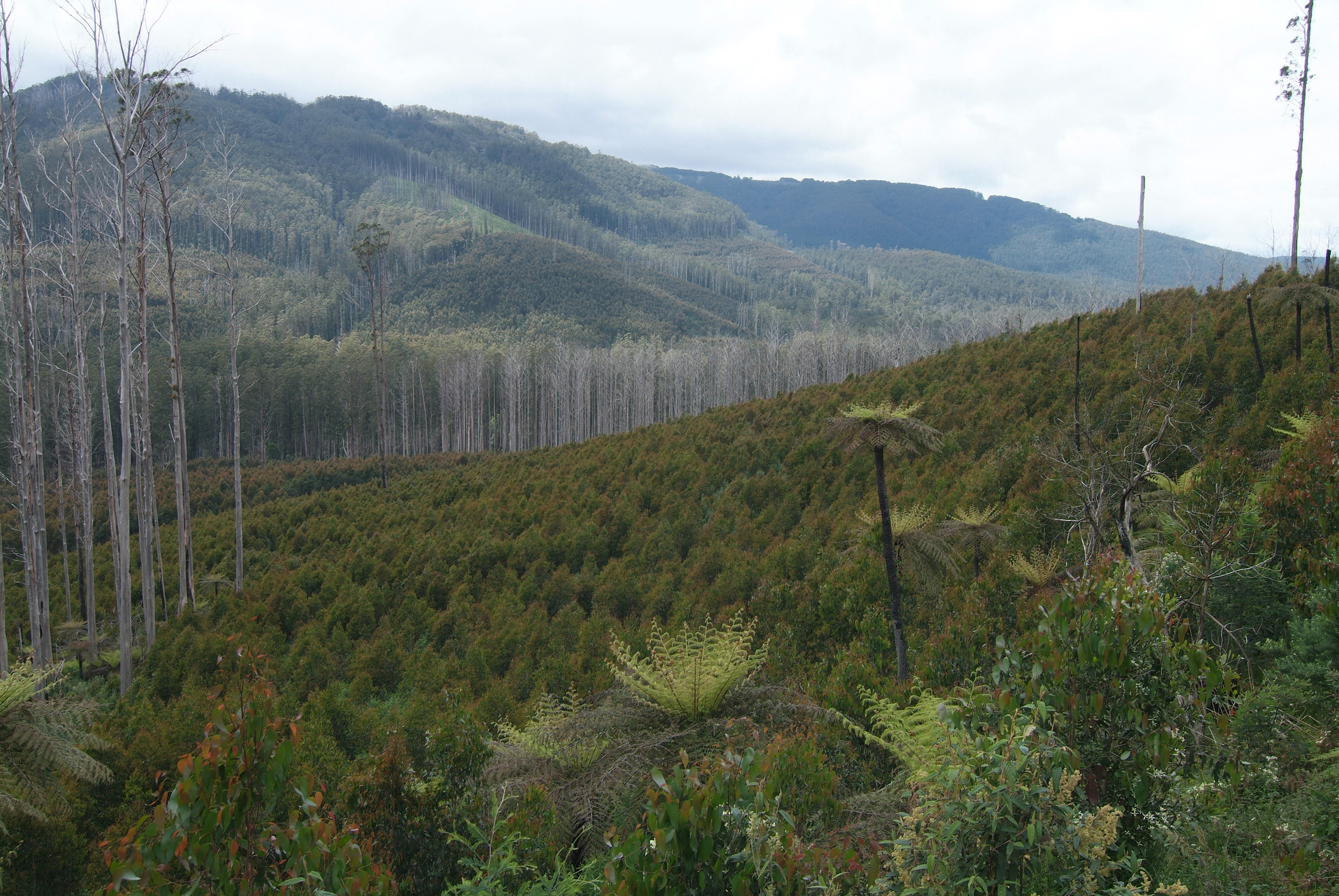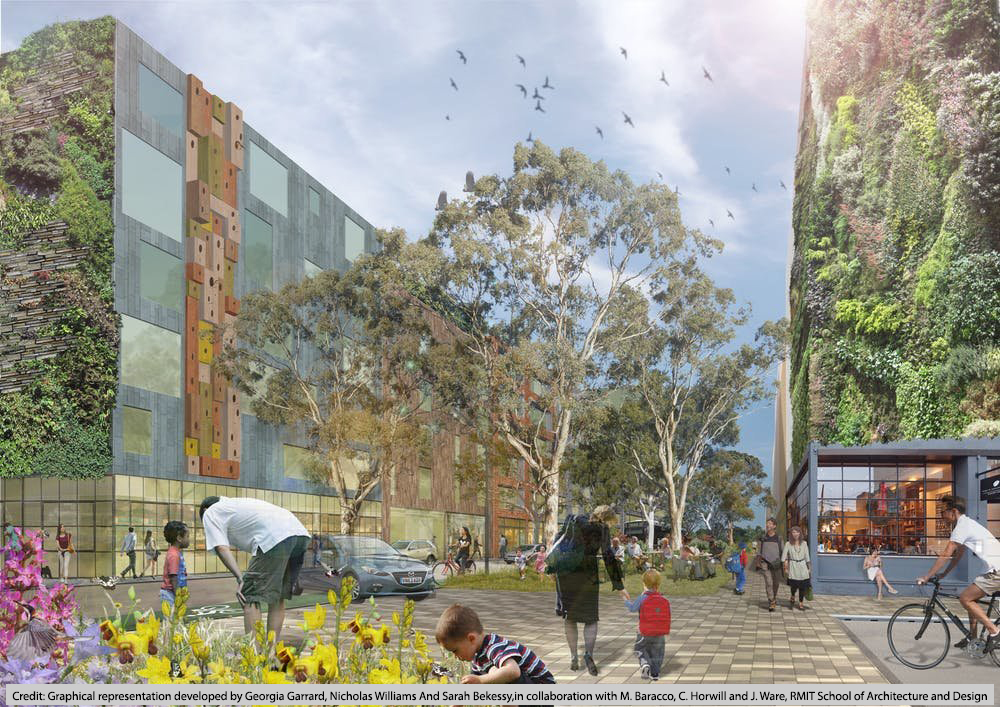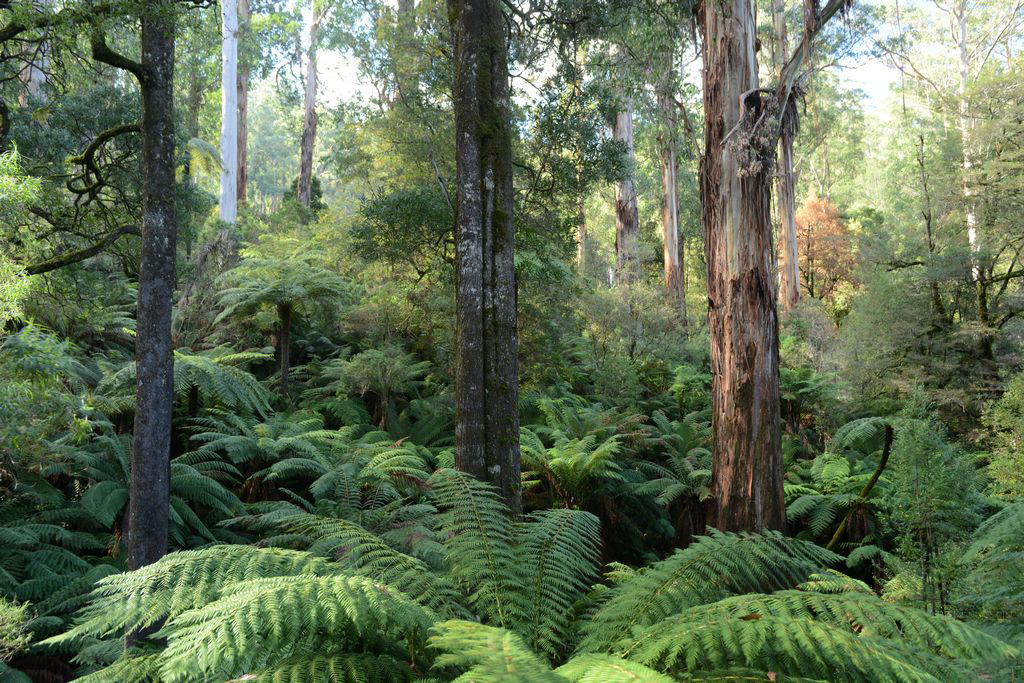
Accounting for ‘a home among the gum trees’
Sunday, 12 March 2017Threatened species are often found in landscapes where there are competing interests and views on how things should be managed. Different people place different values on different things. Farmers, foresters and conservationists, for example, would value things in a landscape from different perspectives. Who are you going to call to deal with these tensions? Ecologists? Engineers? Economists? TSR Hub researchers have called in the accountants, and their approach has highlighted that continuing with native forestry land use simply doesn’t add up in Victoria.
The critically endangered Leadbeater’s possum has its ‘home among the gum trees’ up in the Central Highlands of Victoria. Unfortunately, any old gum tree won’t do. These small striped possums need montane ash forests with large decayed trees with hollows to provide den sites, a dense wattle understorey for food, and a complex vertical structure to provide transport routes through the forest. This has been known for some time but fire and forestry practices in Victoria’s ash forests have reduced the amount of suitable habitat to such an extent that the future of the Leadbeater’s possum is looking bleak. 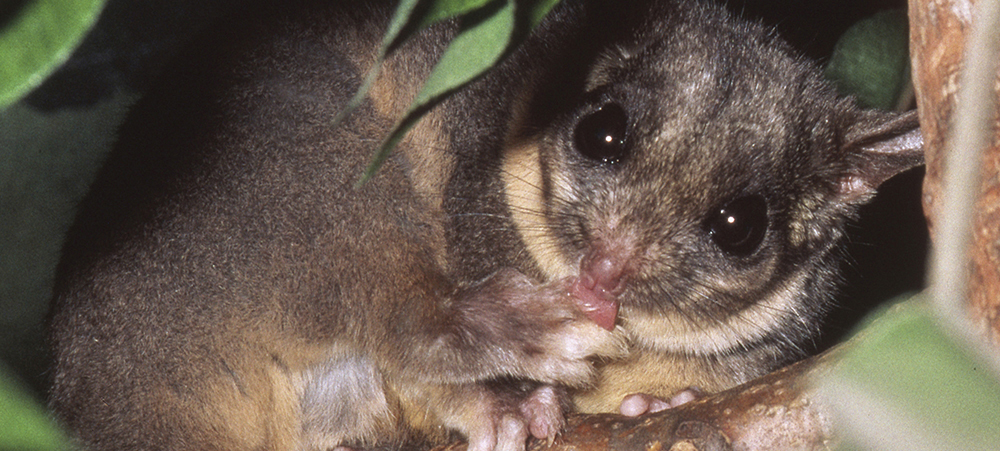
The critically endangered Leadbeater’s possum could use a hand from a good accountant. Image: David Lindenmayer
But their home among the gum trees serves many other uses too. They store carbon, provide timber, are a water catchment, and are used for recreation and bushwalking. How should this landscape be managed? Which values should be given priority?
There are many studies on each of these areas of value (eg, carbon, timber and water) but there’s never been a framework that brings them all together. But that may be about to change. TSR Hub researchers at The Australian National University have recently attempted to create a set of ecosystem accounts that brings all these values together into one frame. This research has been developed in consultation with experts and draws on feedback from Australian and international leaders in ecosystem accounting.
“The ecosystem accounting approach being applied in the Central Highlands describes an integrated accounting structure covering component accounts (for example, land, water, timber, carbon and biodiversity), as well as accounts for ecosystem extent, condition and services,” says Dr Heather Keith, the lead researcher on the ecosystem accounting project.
“Our approach uses the United Nations System of Environmental-Economic Accounting to calculate the value of ecosystem services and the value of an industry’s contribution to Gross Domestic Product (GDP) for each land use.”
Working with Professor David Lindenmayer and Dr Michael Vardon, Dr Keith has used publicly available data to calculate the value of water, timber, tourism, agriculture and carbon. And what they have found is that the provision of water, agriculture, carbon and tourism in the forests is far more valuable than native timber harvesting.
As one example, the industry value added of the water supply provided by the mountain ash forests is over $100 million per year. Native timber harvesting, on the other hand, provides less than $20 million per year. That’s a fraction of the water value in the study area.
And when you factor in the role these forests play as critical habitat for the Leadbeater’s possum as well as 37 other threatened species, the argument becomes compelling. 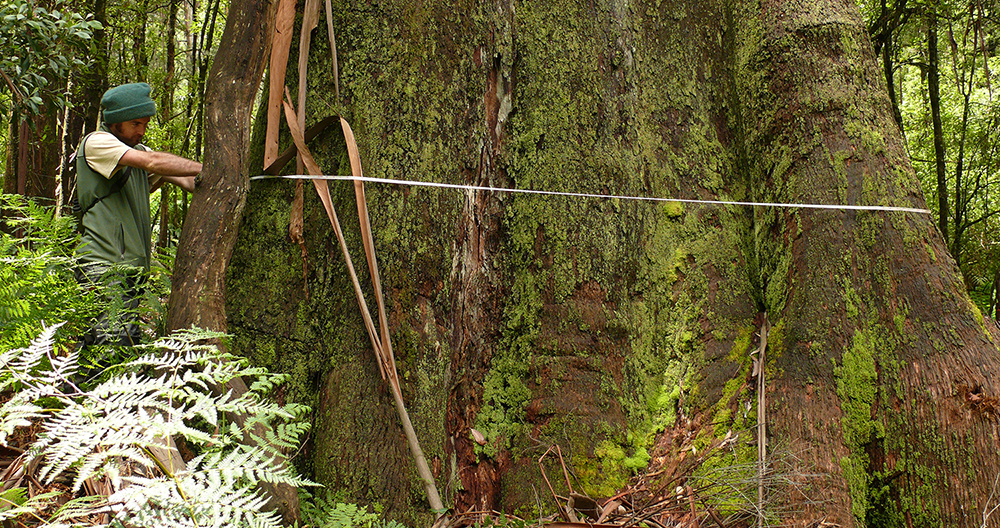
The best trees for wildlife are hundreds of years old. Image: Dave Blair
The current area of ash forest in the Central Highlands is approximately 171,000 hectares. Peer-reviewed models recently published by TSR Hub researchers suggest that preserving this entire area is important to ensure a stable outlook for the Leadbeater’s possum in the face of future fire risk and ongoing habitat decline. This would also improve the outlook for other threatened species such as the greater glider and the sooty owl.
Fortunately, economic analysis shows that there are many alternatives to harvesting native timber. Tourism based on the natural assets of the region provides a viable and sustainable future for the Central Highlands. Accountants, it would seem, may be the Leadbeater’s possum’s best friend.
Recommendations for land management in the Central Highlands
Based on this ecosystem accounting approach, ceasing native forest timber harvesting would provide the following benefits to Victoria:
Economic
i) Increase the value of ecosystem services of provisioning for water, culture and recreation.
ii) Re-direct government investment to land use activities with a higher rate of return.
iii) Encourage private investment and employment in tourism, plantation forestry and agriculture
Social
i) Improve the quality of the environment for residents and visitors, and services for recreation and aesthetic amenity.
Environmental
i) Conservation of biodiversity
ii) Climate change mitigation by maximising carbon stocks in forests
iii) Maximise water yield and quality 
Figure 1: Value of ecosystem services for the Victorian Central Highlands (2013-14). If native forest harvesting ended there would be losses in native timber production but gains in carbon sequestration and water yield.
Five cheers for ecosystem accounts
- Ecosystem accounts provide information in a format relevant to guide policy-making on regional land management.
- Ecosystem accounts follow the internationally recognised statistical standard of the United Nations System of Environmental-Economic Accounting (SEEA).
- Accounts synthesise data on ecosystem assets (extent and condition), the use of these assets by people (ecosystem services and derived products), track changes in state of ecosystems, link these changes to economic and other human activity, and the benefits they provide to society. It highlights the risks to ecosystems and the dependencies of economic activity on ecosystems.
- Goods and services accounted include those already within the market and calculations of GDP and the System of National Accounts, as well as those that lie outside these systems as unrecognised non-market contributions of ecosystems to economic activity and human well-being.
- Evaluating ecosystem assets and services for their contribution to human well-being is now considered a critical component for improving how decisions are made about natural resources.
For further information:
heather.keith@anu.edu.au
